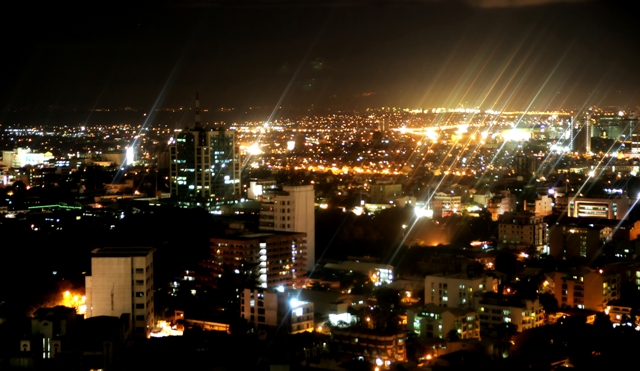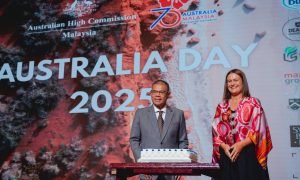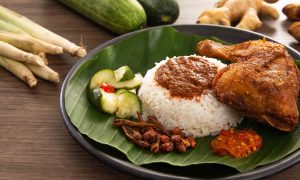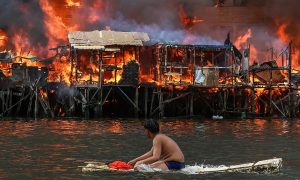
Despite being a founding member of ASEAN, this collection of islands has had a turbulent journey to the relative stability it enjoys today. Sarah Rees has been delving into the meddling and messing that has battered the Philippines over the years.
As with so many countries and empires in the generations past (and no doubt the generations to come), natural resources and spontaneous opportunities only count for so much. At the end of day, it is the people who have the chance to make or break a country’s fortunes, and bright futures can be swiftly derailed by the meddlesome dabbling and power struggles of those who interfere.
Seen today as a slightly poorer relation of its Asian neighbours, the Philippines actually boasts a multitude of natural resources, from vast sources of untapped gold and copper to geothermal energy (it’s the second largest producer in the world). It also, thanks to its tropical climate and lush forests, is one of the world’s most megadiverse countries, harbouring the majority of the world’s species – an incredible 16 new species have been discovered in the decade alone.
And yet for many years this potential has gone untapped. Years of war, revolution, occupation, and a few bad apples (the human variety) have made peace and stability hard to come by, and it is only now that this nation of 92 million is beginning to pick itself up.
Foreign Influence
The more than 7,000 islands that forms the present day country was only unified in the 1500s when the Spanish laid claim to the land and made Manila the capital of their Asian empire, the Spanish East Indies. Tribal leaders, rajas, and chiefs were brought grudgingly into line but the Spanish, to their credit, did their best to bring some infrastructure into the country. Schools, hospitals, and universities were built, Christianity was spread (over 90% of Filipinos remain Christian today), and trade introduced a selection of new, lucrative crops including pineapple, potatoes, tomatoes, and chilli peppers.
There were revolts, there were invasions (the Brits, Portuguese, and even a gang of Chinese pirates tried their luck), but the Spanish held sway for over three centuries, until a number of Philippines-born Spaniards began to sense that the time was right to slip loose of Spanish control. Andreas Bonifacio was the man who lit the spark in 1896, and just two years later, the Philippines celebrated its independence.
Alas, it was a short victory, as no sooner had the nation wriggled free of the Spanish, the Americans turned up. Having “bought” the Philippines from Spain during the Spanish-American War, the US had no interest in accepting the country’s new independent status. War ensued, with the US emerging victorious and the Philippines back in the hands of foreigners.
As the century turned, the Filipinos continued to think lustily of independence, but their dreams were shelved when World War II found its way to their islands. The Japanese arrived in the 1940s to make the Philippines an outpost of their Empire, defeating the ground forces at Baatan Peninsula and forcing the survivors on a death march that killed thousands.
Throughout the Japanese Occupation, the Filipinos continued to long for independence, and a multitude of guerrilla forces sprang up, providing constant annoyance for the occupiers. In 1946, at long last, the Japanese withdrew and the Philippines took their country back, albeit one ravaged by years of war, riddled with communist factions, and reeling from the atrocities of the occupation.
Power And Money
Helping the country takes its first steps of independence was always going to be a tricky task, but surely few would have failed so spectacularly as the intriguing Ferdinand Marcos, who took up prime ministerial duties in 1965.
As the son of a former National Assembly representative, Marcos’s name was already known to the political world by the time he took office: twenty-six years earlier, at the age of 21, he had been given a death sentence for murdering his father’s rival, although this was eventually overturned by the Supreme Court.
His time in office did bring some improvements for the country – Marcos can be credited with successful infrastructure developments and economic reform – but these were somewhat tarnished by the widespread corruption and repression. Rivals were routinely arrested, friends found themselves endowed with land and businesses, while an enormous amount of international aid from his pals in Washington disappeared suspiciously, leaving holiday homes and, infamously, thousands of pairs of shoes (for his wife Imelda) in its wake.
The nation’s coffers were also used to fund an expensive, violent, fraudulent re-election campaign that ensured Marcos a second term, and he wangled a third by circumnavigating public opinion, exaggerating the threats posed by communist and Muslim insurgencies, and declaring martial law in 1972.
Things then began to get increasingly worse: via his newfound powers, Marcos began curtailing all manner of civil liberties, bringing in a state-controlled press and even establishing a mandatory youth movement, headed by his daughter, to indoctrinate the young to his “New Society.”
Predictably, as Marcos’s health began to deteriorate, his control began to slip. When the leader of the opposition, arriving back in Manila in 1983 after three years of exile, was assassinated by his military escort at the airport, public outrage swelled. The blame was never conclusively attributed to Marcos, but his reputation was so threatened that he called a snap election in 1986 – rigged, if sources can be believed.
Enough was enough. The opposition rallied, and Marcos fled to Hawaii via a safe passage provided by the US government, and died there in 1989.
On The Top Up
It seems Marcos’s exit was the beginning of a better time for the Philippines, and the subsequent years have seen the country finding its feet and earning its place in the region. It was no easy task – attempted coups, communist insurgents, and the East Asian financial crisis of 1997 all served to derail the climb – but the country is at last beginning to blossom and develop, growing into the great nation it should have been all those years ago.
These days, the future looks brighter for the nation. Tourism is nudging the Philippines into international awareness, and it has endeared itself to world leaders thanks to its democratic regime and eagerness to be included (it was a founding member of ASEAN). Money is moving too, and some have predicted that the Philippines will eventually outpace its neighbours economically: it is touted to become the largest economy in Southeast Asia by 2050.
It is about time for the people of the Philippines to enjoy their natural assets and follow their wealthy neighbours onto the global stage. Let’s just hope that their islands will be left alone long enough to propel the long-suffering people into a world of comfort and prosperity they have so long coveted.
———————————————————————————————————
The Philippines
Size: 300,000 km2 (World rank: 73rd)
Population: 92,337,852 (2010 census)
Capital city: Manila
Largest city: Quezon City (part of metro Manila)
Government: Unitary presidential constitutional republic
Official languages: Filipino and English
GDP PPP*: $4,429
HDI**: 0.644, medium (World rank: 112th)
Currency: Philippine peso (1MYR = 13.56PHP)
*GDP per capita, purchasing power parity, international dollars
**Human Development Index, a comparative measure of life expectancy, literacy, education, standards of living, and quality of life for 187 countries worldwide. (For comparison, Malaysia’s HDI is 0.769, high, and is ranked 64th.)
———————————————————————————————————
Notable Facts:
One of two major island nations in ASEAN, the Philippine archipelago comprises just over 7,100 islands with a total coastline of over 36,000km in length.
The Philippines has one of the more nomadic populations in the region: in addition to the more than 92 million Filipinos in the country, an additional 11-12 million live and work outside of The Philippines, including as many as 900,000 in Malaysia, many undocumented.
Currently, the economy of the Philippines is ranked by the UN as the 43rd-largest in the world; however, it is estimated by HSBC to swell to the 16th-largest by 2050, a world-leading jump of 27 places from today. Should this growth be realised, The Philippines would then have the largest economy in the ASEAN region by that time. (Malaysia’s economy, by comparison, is forecast to be the world’s 21st-largest in 2050.)
———————————————————————————————————
Source: The Expat June 2013
What are your thoughts on this article? Let us know by commenting below.No registration needed.
"ExpatGo welcomes and encourages comments, input, and divergent opinions. However, we kindly request that you use suitable language in your comments, and refrain from any sort of personal attack, hate speech, or disparaging rhetoric. Comments not in line with this are subject to removal from the site. "

















